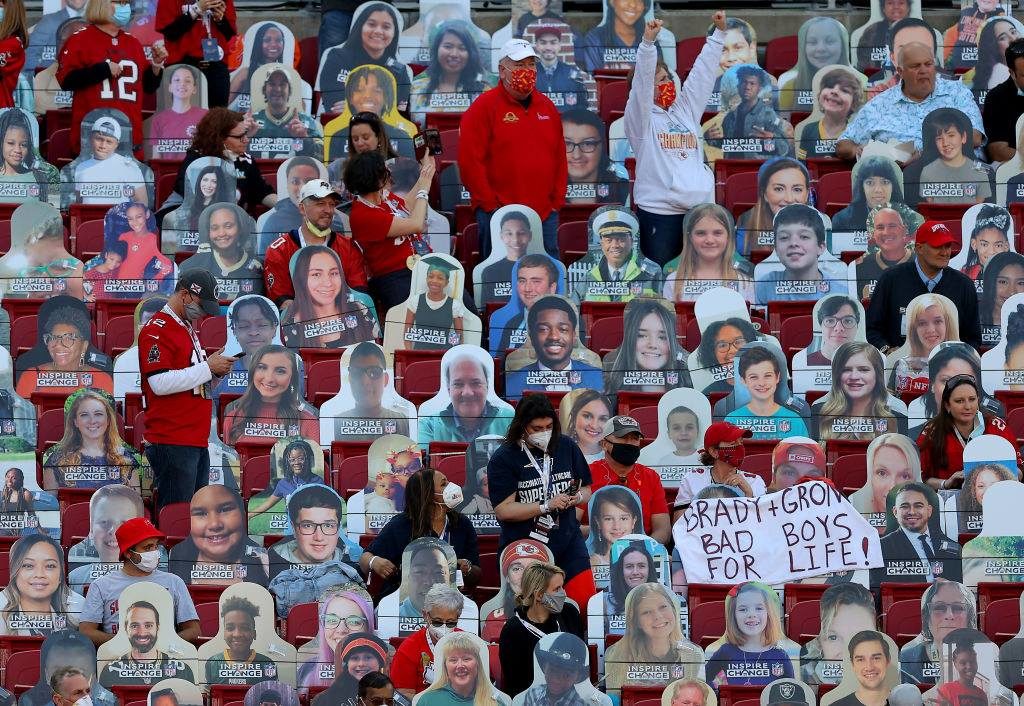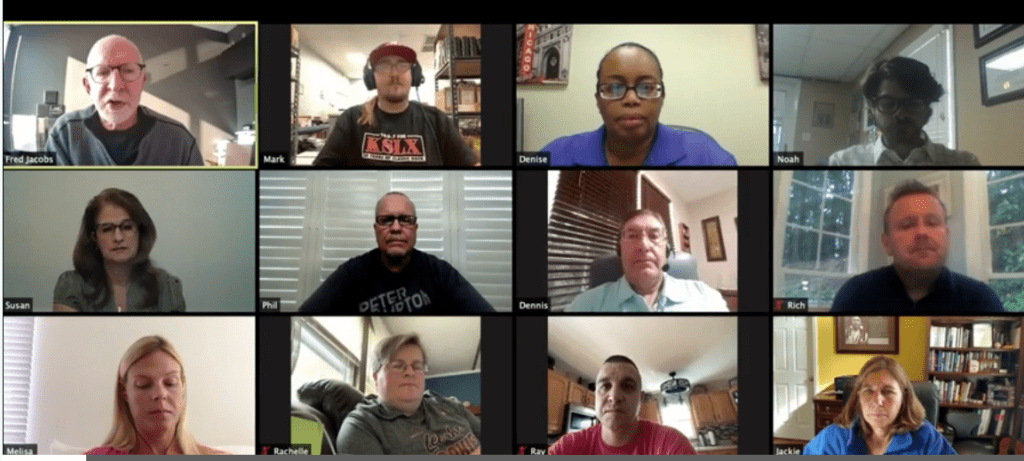 To absolutely no one’s surprise, Super Bowl LV network TV viewership was down this year – in fact, lower than it’s been in years.
To absolutely no one’s surprise, Super Bowl LV network TV viewership was down this year – in fact, lower than it’s been in years.
We not-so-boldly predicted viewership would be light in this blog a few weeks back. Between the CDC’s instruction to avoid Super Bowl “super-spreader events,” a mostly empty Raymond James Stadium, and a halftime show headliner featuring an artist most people post-40 had never heard of, it was no shock the game wasn’t its usual “must-see TV.”
CBS Sports reported a total broadcast audience of just 96.4 million viewers, the lowest since 2006.
But what about the game’s streaming numbers?
Deadline reports the much-hyped matchup between Tom Brady’s Bucs and Patrick Mahomes’ Chiefs set a record for digital streaming. Averaging 5.7 million viewers per minute, the game smashed previous streaming records – up 69% from 2020’s totals.
Like most Super Bowls, LV achieved all sorts of firsts – especially on the field, as Tom Brady walked away hugging his much older kids while snagging his seventh Lombardi Trophy.
But in terms of media, low broadcast viewership was counterbalanced by unprecedented streaming numbers. That’s an important sub-headline that should garner more attention.
Radio broadcasters that truly understand media trajectories know this same phenomenon is happening with many of their stations, and especially popular radio shows. Some people listen in real time on a “regular radio.” But growing legions are finding content on apps, smart speakers, and other devices. Or they’re accessing “best bits” and other content on-demand, at their convenience.
Yes, radio usage levels are down terrestrially, due to a large part to the COVID effects of higher unemployment, less commuting, and record levels of work-from-home.
While consumers may still not be spending as much time in their cars and trucks, many have discovered they can listen to radio via mobile apps, smart speakers, Bluetooth speaker systems, and even on Internet-connected TVs.
 But the ratings are tipped to “terrestrial” consumption of both TV and radio content, while digital usage is always a paragraph or so lower, an afterthought often marked with an asterisk.
But the ratings are tipped to “terrestrial” consumption of both TV and radio content, while digital usage is always a paragraph or so lower, an afterthought often marked with an asterisk.
Not only does this serve to devalue the impact and effect of streaming media, it also discourages broadcasters from leaning into these alternative ways to watch Tom Brady, tune in B. J. Shea in the morning, or listen to 105.1 the Bounce while they work, even if there’s not an FM radio handy.
That’s because the only people who care about where we watched (or how we listen) are those on the inside of the business – broadcasters, advertisers, ratings companies.
For regular people, it doesn’t matter how they enjoy content, whether it’s a football game, a talk show, or a morning drive program – as long as they find it and consume it.
That’s why when we use an asterisk to describe streaming numbers, we miss the opportunity to promote and market the big tent of consumption that is now taking place, whether you live in New York City or Nebraska.
In radio, we are still primarily looking at terrestrial numbers, only secondarily glancing at streaming totals or headphone plus-ups in PPM markets. And as a result, radio broadcasters are still less apt to lean into their streams, aggressively promoting them, or even ensuring they’re still operational and sounding competitive.
This may be a case where consumers are leaping ahead of media companies. More and more, real people are discovering devices, platforms, and workarounds that allow them to enjoy content wherever, whenever, however.
That’s precisely what I see again and again when I listen to real people in qualitative settings – like focus and L.A.B. groups.
 Last fall, Jacobs Media conducted a Zoom session for the NAB/RAB Radio Show. One of our respondents – a Chicago guy named Ray (red shirt, bottom row) – told us how his boss doesn’t allow radios in his workplace. So, most employees – including him – use their phones and earbuds to make the days go by faster. In his case, he was a core listener to WDRV.
Last fall, Jacobs Media conducted a Zoom session for the NAB/RAB Radio Show. One of our respondents – a Chicago guy named Ray (red shirt, bottom row) – told us how his boss doesn’t allow radios in his workplace. So, most employees – including him – use their phones and earbuds to make the days go by faster. In his case, he was a core listener to WDRV.
Ray explained how when he leaves the warehouse for the day and jumps in his car, he still listens to the station on his phone, even though the car radio is nearby. Why? Why not? It’s what’s convenient to him at that moment in that situation.
Shouldn’t that be enough?
As we saw again and again at CES 2021, and as we’re living every day in radio, it is about meeting the audience where they are.
As COVID reaches its one year anniversary, we continue to see how older consumers have been forced to sharpen their tech skills – downloading apps, connecting Bluetooth speakers, pairing their phones in their cars, and joining Zoom holidays with relatives and friends.
That same uptick in Tech IQ goes a long way toward explaining why one of the big takeaways from Super Bowl LV wasn’t all those cardboard fans in attendance – it was how many very real people were watching and listening in myriad locations on all sorts of devices and platforms.
When content creators and marketers make their programming accessible to growing numbers of wily fans, it’s a win for both consumers and advertisers.
Isn’t that super?
- What To Do If Your Radio Station Goes Through A Midlife Crisis - April 25, 2025
- A 2020 Lesson?It Could All Be Gone In A Flash - April 24, 2025
- How AI Can Give Radio Personalities More…PERSONALITY - April 23, 2025




It sure is Super! And, total listenership/total viewership needs proper accessibility & low expense for the real deal. Content & The Show = Our Most Important Product. Thanks, Fred!
Thank you, Clark.
Amen. Why wouldn’t Hawaii Public Radio want to know they have a listener in Maine simply because that Mainer was too much of a slug to get out of bed and hear Morning Edition on his local station?
Good question, John. Who cares when, where, and how they listen? As long as they listen.
Good one here, Fred. Unlike streaming services offered by ESPN, NBC and others, CBS Sports HQ is FREE to stream. It was a Super Bowl godsend for me, as I have “cut the cable cord” and continue seeking ways to cut costs, while still enjoying good programming.
The plus on CBS Sports HQ was good content & production values (imagine that!), with fresh and enjoyable personalities like Hakem Dermish and Jamey Eisenberg, who I wouldn’t have otherwise discovered.
Listen up, radio: I don’t mind ads, as long as the breaks aren’t too long and the content is rewarding. Radio needs to pay attention, as it continues to evolve from an all-terrestrial service to more of a hybrid offering.
Good points all, Dave. Radio needs to be much more attentive to the user experience – especially with the stream. Appreciate those observations about CBS Sports HQ. Consumers are figuring it out. Media companies had better keep pace.
It’ll be better when measurement catches up to the users. And it’s coming. What I hear is in the pipeline, especially for TV/video, is actually kind of frightening in terms of what the distributors will be able to know about you. I think that horse has left the barn.
Word to the wise: if there is a channel, a conduit, a platform, any method of distribution anywhere on any device you can name…and if you’re not available, you’re losing to the next best source those users can find.
Thanks for this, especially your eloquent “word to the wise.” I might amend, “word to those who hope to survive.” Always great to hear from you, Uncle Lalo.
Powerful. Very well said.
Thank you, David.